Acclaim for Richard Forteys Life An eclectic waltz among organisms at once extraordinary and extinct. No one can finish Life without having accrued considerable knowledge of evolutionary history and a sense of excitement of discovery that can be conveyed only by a professional scientist chipping away at the rock face of his discipline. The New York Times Book Review [Forteys] prose, like Darwins, is spare, confident, and unadorned. As his impressive synthesis of evolution unfolds, a distant world is brought to life. The Economist The personal elements are crucial to the story, for Forteya senior paleontologist in Londons Natural History Museum has been at the center of paleontological research for more than two decades. A wonderful blend of science and anecdote. Natural History A true history of the world. A humbling narrative, written with a powerful impact. A tour de force. St. Louis Post-Dispatch A celebration of learning, a spellbinding look into prehistoric landscapes and a captivating piece of literature. The Columbus Dispatch Fascinating. Describes the climb up the evolutionary ladder with scientific accuracy and an urbane literary style. Parade Life is an astonishing performance, the gathering of an immense store of knowledge and experience by a single individual and bearing his personal stamp. The Kansas City Star The scope of the book is immense. It takes the reader into the heart of the evolutionary process. The Raleigh News & Observer Forteys contribution is unique. He makes very clear how the biological world evolved in harmony with changing geological and climatic conditions. San Francisco Examiner A hypnotic tale of what may have happened 3.8 billion years ago. Outside The author has magically transposed and integrated his academic biography and intellectual growth into the natural history of life. Fortey lyrically raises fossils from the dead. Nature

Richard Fortey Life Richard Fortey is a senior paleontologist at the Natural History Museum in London. He is the author of several books, including Fossils: A Key to the Past and The Hidden Landscape , which was named the Natural World Book of the Year in 1993. In 1997 he was elected a Fellow of the Royal Society. Also by Richard Fortey

FOSSILS: A KEY TO THE PAST THE HIDDEN LANDSCAPE

For Jackie, with my love
Contents
Illustrations Unless otherwise stated, photographs come from the authors own collection . Acknowledgements T HIS BOOK would not have been as it is without the trenchant editing of Heather Godwin, nor without the punctilious attentions of Stuart Proffitt. I owe them both a great debt. I sincerely thank Robin Cocks and Neale Monks for acting as scientific readers, and for commenting on sundry facts. Claire Mellish kindly drew two of the diagrams. I particularly thank Chris Stringer, Theya Molleson and Robert Kruszynski for anthropological advice. Many friends and colleagues helped me by providing illustrations and advice (they carry no responsibility if I did not heed the latter). These include: Stefan Bengtson, Per Ahlberg, Cedric Shute, Paul Cornelius, Angela Milner, Bill Schopf, John Richardson, Brian Rosen, Phil Palmer, Jerry Hooker, Giles Miller, Joyce Pope, Andrew Ross, Sally Young, Alison Longbottom, John Whittaker, Clive Jones, Richard Thomas, Peter Forey, Sandy Knapp, Charlotte Jeffery, Jeremy Young, Solene Morris, Andy Gale, Norman MacLeod, Anthony Sutcliffe, Harry Taylor, Bob Bloomfield and Tracey Elliott. I acknowledge the Palaeontological Association for reproduction of a conodont animal. Hamish Francis kindly read the proofs. Finally I thank my family for tolerating my eighteen months exile in the boxroom in the company of the snake.R.A.F.
Chapter 1
The Everlasting Sea
S ALTERELLA DODGED BETWEEN THE ICEBERGS . While the Small boat bucked and tossed, I hung over its side, peering down into the clear Arctic waters. I had not known that there could be such density of life. This frigid sea was a speckled mass of organisms. Tiny copepod crustaceans, looking like so many animated peas, beat their way in their thousands through the surface waters, feeding on plankton that I knew must be there, but which could not be seen without a microscope. There were jellyfish of every size: white, gently pulsing discs as delicate as spun glass; small pink barrage balloons decked with beating cilia, which appeared to be solidbut became gelatinous and impalpable if grasped from the water; an occasional orange monster with tentacles that promised evil stings for fish or mammal. They drifted in their millions, swirling and beating against the dumb tides, concealing purpose in contractions as instinctive as breathing, like protoplasmic lungs dilating and constricting in primitive obedience to the prompting of the currents. Behind the nearest iceberg arctic terns beat and hung in the air, peering down as I was, but with so much more precision, then darting to retrieve some living morsel from the sea. The ice floes were stained pink with their droppings.
Salterella was tackling a stretch of sea, Hinlopenstretet, between the islands of Spitsbergen and Nordauslandet far beyond the Arctic Circle at 80 degrees north. Ice floes had melted in the summer thaw, sculpted by the vagaries of weather into plates or crags, or simulacra of giants. On the water-line they were notched deeply by the sea, lapped by insistent waves, and just occasionally one would teeter into instability, cracking and keeling over with a great resigned splash which sent waves to make our small boat buck and grind against the smaller fragments of ice. It was true: the greater part of an ice floe was always beneath the sea, and you approached too close at your peril. If you looked down, you could see the bluish mass curving down into the deeps, while jellyfish skimmed hidden protuberances with impunity. Little Salterella sought the spaces between the floes. Her wooden construction was designed to cope with ice. Winds herded floes into clots that could become almost impenetrable. Then, suddenly, patches of clear water would allow rapid progress, and the bleat of the motor sent little auks and black guillemots fluttering low across the sea to plunder the rich waters elsewhere. In the distance a mysterious coastline lay low on the horizon. Glaciers ran straight down to the sea. Ice cliffs groaned or barked to signal the inexorable creep of sheets of ancient ice. The boat seemed like an interloper.
I was twenty-one and on my first expedition. Cambridge University had a tradition of sending young geologists to Spitsbergen. For a young naturalist it was very heaven. Here there were birds on every side that had only existed as pictures in bird books. The sea, the profligate sea, was a shimmering textbook of zoology. There seemed nothing to interfere with the joy of observation, no end to knowledge, no possibility that any discovery should be less than astounding.
The boat comprised two crew and several scientists, including myself and Geoff. We had already suffered in the old whaling vessel which had carried us from Norway, a switchback ride across the Barents Sea all the way to Spitsbergen. Few on board could face the whale-meat stew. Our expedition leader was the worst sailor of all, having disappeared below decks just after leaving the Norwegian port of Boda, and only reappearing a week later when we reached the base at Longyearbyen.
Geoff and I were to live together for weeks in a small tent, watching our beards grow from speckled patches to whiskers worthy of a Victorian paterfamilias. Together, we were in search of ancient fossils. An expedition from the previous year had stopped off to replenish their water supplies from a melt stream running off the great glacier of Valhallfonna in this remote and unwelcoming northern part of the archipelago. To everyones surprise, the crew had picked up lumps of dark limestone on the beach that teemed with fossils: trilobites and brachiopods and many unrecognizable things besides. Nobody knew that fossil remains of such animals existed in this part of Spitsbergen. It was all completely new. But there had been no time to investigate that year because the Arctic night was closing in. Perpetual dusk was soon replaced by perpetual night. The few lumps of rock were brought back to Cambridge, and were studied by the great Professor Whittington, who pronounced them very interesting. Thus it was that two students came to be sitting side by side on Salterella looking at swarming jellyfish, and in such serendipitous ways lives are decided. It was 1967. All You Need Is Love was top of the hit parade, and stayed there for the whole expedition.
Next page
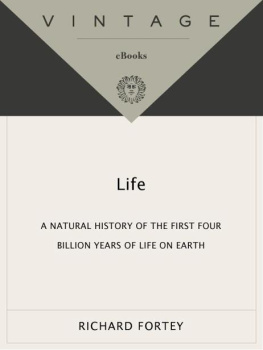


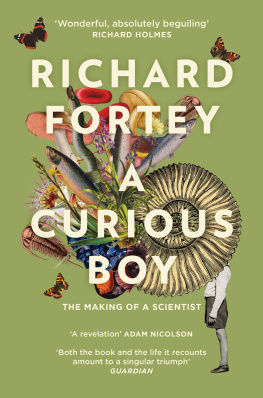

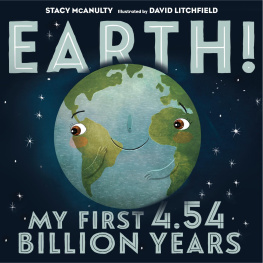
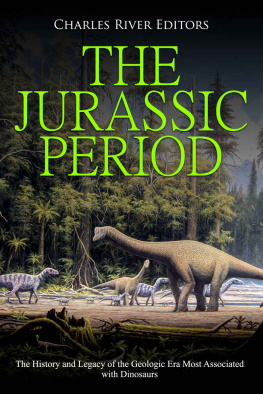
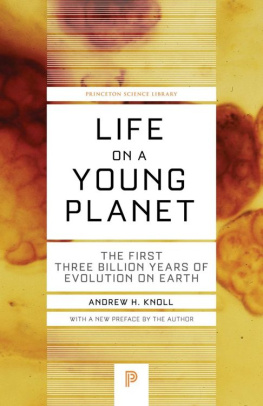
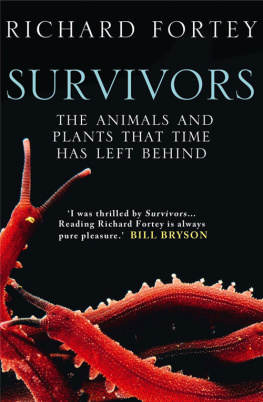

 FOSSILS: A KEY TO THE PAST THE HIDDEN LANDSCAPE
FOSSILS: A KEY TO THE PAST THE HIDDEN LANDSCAPE 